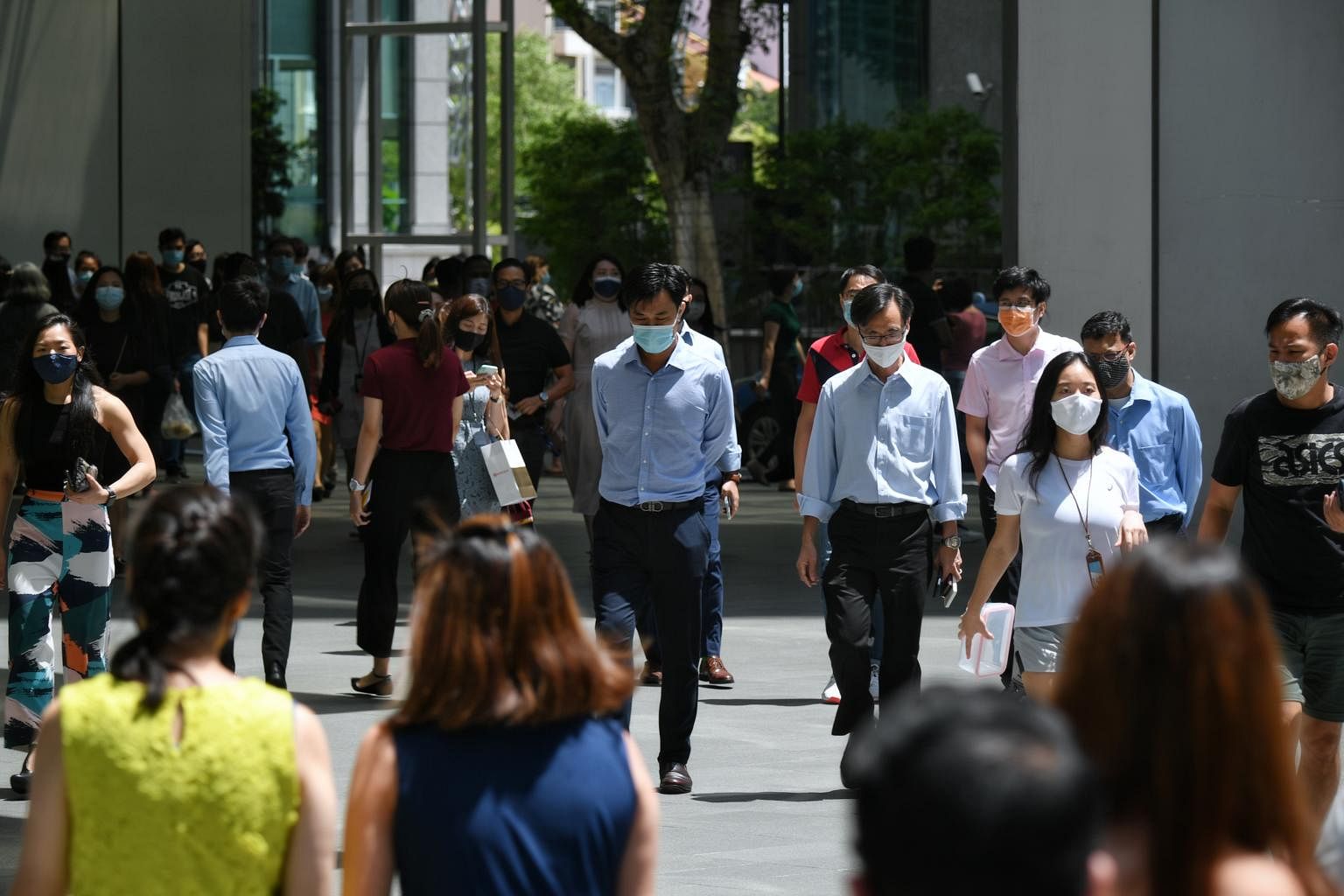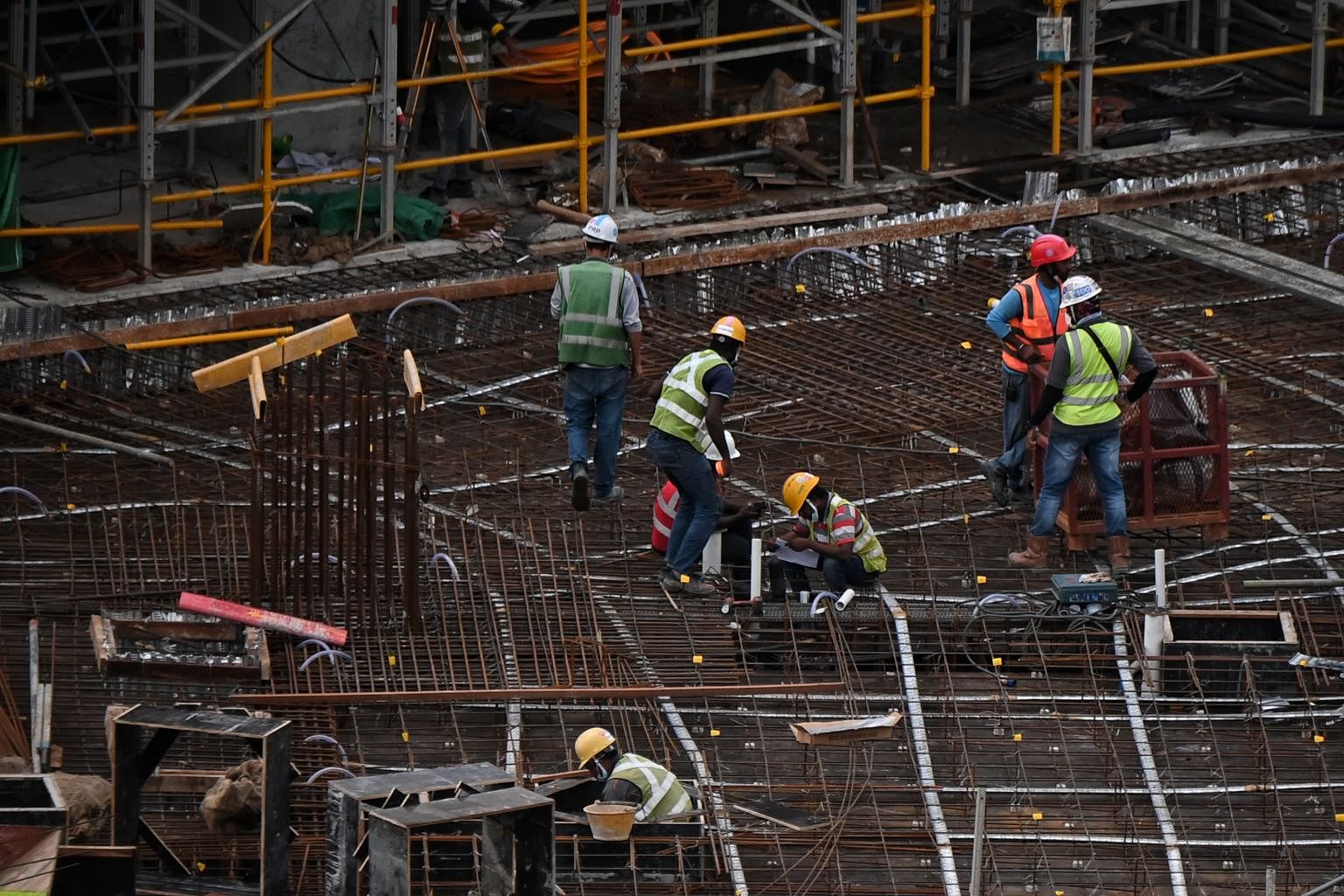Singapore job market recovery to continue at more gradual pace in 2022: MOM
Sign up now: Get ST's newsletters delivered to your inbox

Total employment, excluding migrant domestic workers, rebounded by 41,400 last year after a contraction of 166,600 in 2020.
PHOTO: ST FILE
Calvin Yang
Follow topic:
SINGAPORE - Singapore's labour market recovery is expected to be sustained this year as business activities continue to pick up, although this could be affected by rising uncertainty in the global economic outlook amid the ongoing Russia-Ukraine conflict.
The pace of recovery may be more gradual as most significant improvements were already made last year, the 2021 labour market report by the Ministry of Manpower (MOM) on Monday (March 14) showed. Domestically, the outlook is likely to be uneven across sectors.
Last year, total employment, excluding migrant domestic workers, rebounded by 41,400 after a sharp contraction of 166,600 in 2020.
This was due to stronger resident employment growth, which rose by 71,300 and more than offset the non-resident employment decline of 30,000, the ministry highlighted in the report on Monday.
In the fourth quarter alone, total employment went up substantially by 47,900 despite the Omicron outbreak. The number of non-resident workers employed grew for the first time in two years with the gradual easing of Covid-19 border curbs on the inflow of foreign labour.
Employment
MOM’s data showed resident employment trends were mixed. While employment grew in sectors such as information and communications, health and social services, professional services, administrative and support services, and financial services; it fell moderately in accommodation, air transport and supporting services, and arts, entertainment and recreation due to tight travel restrictions for the most part of the year.
Meanwhile, non-resident employment declined in all sectors except for construction, which was boosted by an increase in the fourth quarter with easing border restrictions.
This decline was due to decreases in the number of Employment Pass holders by 15,300 and S Pass holders by 12,200. The number of work permit and other work pass holders also fell, but by a smaller extent of 2,400.
Unemployment
The unemployment situation also improved.
The overall rate fell to 2.7 per cent last year, from 3 per cent in 2020. The resident unemployment rate, which covers Singapore citizens and permanent residents, declined to 3.5 per cent, from 4.1 per cent previously. Among citizens, this was 3.7 per cent, down from 4.2 per cent.
The unemployment rates in January this year were around those seen in December 2019, according to the report.
However, the average long-term unemployment rate among residents – which accounts for workers who have been unemployed for 25 weeks or more – remained elevated at 1 per cent, compared with pre-Covid-19 levels of about 0.7 per cent.
This was due to “structural mismatches (that) tend to take longer to dissipate”, MOM explained.
Retrenchment and re-entry into employment
On the retrenchment front, there was a significant decline from a high of 26,110 in 2020 to 8,020 last year, below pre-Covid-19 levels.
A higher proportion of retrenched residents were able to secure employment. The annual re-entry rate among retrenched residents rose from 62 per cent in 2020 to 66 per cent last year - a six-year high.
Job vacancies
At the same time, hiring and job vacancies have gone up.
The seasonally adjusted recruitment rate trended higher to 2.5 per cent in the fourth quarter - a rate last seen in 2014. The resignation rate also held steady over the quarter at 1.7 per cent, slightly below the typical pre-Covid-19 rate.
Outgoing Permanent Secretary for Manpower Aubeck Kam said: “We are not seeing any overall uptick in resignation rates. There are of course some sector variants, but nothing to suggest that there is anything of concern on that front.”
Overall, the labour market remained tight, with the seasonally adjusted number of job vacancies rising further to 117,100 in December last year.
The high number of job openings was driven in part by travel restrictions impacting the inflow of migrant workers, highlighted the report.
However, with the gradual easing of these restrictions, MOM expects non-resident workforce numbers to improve this year, and job vacancies in sectors with heavier reliance on migrant workers to abate.

This year, the outlook for the various sectors will continue to be uneven.
Barring a sharp slowdown in the global economy, outward-oriented sectors are expected to continue seeing positive growth.
The information and communications and financial and insurance services, in particular, can expect healthy growth, due to robust demand for IT and digital solutions, and credit and payment processing services, said MOM. “This should provide sustained labour demand in these sectors.”
Consumer-facing sectors, such as food and beverage services and retail trade, are projected to benefit from the easing of Covid-19 measures as more workers will be needed for the pickup in business activities.
On the other hand, recovery for the tourism and aviation-related sectors is expected to be slow “on account of the gradual loosening of travel restrictions globally, and the nascent recovery in global travel demand”, said MOM. “Employment levels in these sectors may take longer to return to pre-Covid-19 levels.”
Manpower Minister Tan See Leng said he is “cautiously optimistic” that the labour market will maintain its recovery trajectory, despite the increased downside risks.
In a Facebook post on Monday, Dr Tan said providing targeted assistance to help businesses and workers remains a key priority for his ministry. “We will do more to uplift and strengthen support for vulnerable and mature workers,” he added.
Mr Patrick Tay, assistant secretary-general of the National Trades Union Congress, said employers will need to brace for a tight labour market, by looking for ways to redesign jobs and encourage digitalisation to keep pace with the developments.
Workers, too, will need to embrace lifelong learning to pick up fresh skills and stay relevant for new or transformed jobs while being resilient to future changes, he added.
Workers, too, will need to embrace lifelong learning to pick up fresh skills and stay relevant for new or transformed jobs while being resilient to future changes, he added.

